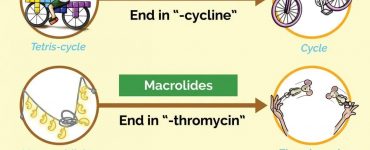For many of us, a nursing diagnosis can sound like a strange concept. Signs and symptoms from our patients frequently lead to a medical diagnosis from a practitioner who specializes in disease. So we may be used to labels such as pneumonia or hepatitis. Not impaired gas exchange or risk for impaired liver function. So how then do we go from “patient can’t breath” to impaired gas exchange anyway? In this article, we will guide you on writing a nursing diagnosis, show examples of nursing diagnosis, types of nursing diagnosis and common nursing diagnosis that you may come across in your practice. So let’s get started!
What is a Nursing Diagnosis?

A nursing diagnosis is when a healthcare provider makes a judgment about how a person or a group of people respond to health issues or life events, or how likely they are to respond in a certain way. This diagnosis helps guide the selection of nursing actions to reach specific goals for which the nurse is responsible. Nursing diagnoses stem from data collected during assessments and help nurses plan care.
Through NANDA International, definitions and classifications guide these diagnoses and are approved and reviewed by the NANDA International (NANDA-I) Diagnosis Development Committee (DDC). So NANDA guides the diagnosis, and the diagnosis guides the nursing care.
In other words, the nursing diagnosis is a fundamental component of the nursing process. Mastering this process is crucial in nursing education, essential for exams and clinical practice alike, and will remain a guiding principle throughout your nursing career. Master the nursing process with the ADPIE mnemonic and use Picmonic to help you ace the topic.
Simply put, in order to determine an appropriate nursing diagnosis, a thorough and accurate nursing assessment is required. This ensures we have gained a clear picture of the patients physical, emotional and social needs. From here we can properly address any health concerns that may require attention and management by a physician and prioritize this care.
What does NANDA stand for?
NANDA was used as an acronym for the North American Nursing Diagnosis Association prior to 2002. After this time, NANDA became NANDA international and dropped its use as an acronym, but retained its name due to its familiarity. So the accurate name of this organization is NANDA International or NANDA-I. NANDA’s intent is to give nurses a platform that allows for communication and sharing of ideas to enhance understanding. Lets face it, nurses make professional judgments every day that help guide diagnosis and improve patient outcomes. Nursing diagnosis then allows us to pass on this knowledge to our patients and colleagues to ensure quality care is implemented.
What are the most common nursing diagnoses?
A nursing diagnosis is a conclusion that a nurse can determine independently without the need for input from an advanced medical provider and differs from a medical diagnosis. More on that later. Common nursing diagnoses may include activity intolerance, acute confusion, anxiety, pain, risk of infection, constipation, and impaired skin integrity. To name a few. So clinical judgment about how our patients are responding to health issues or life events allows nurses to provide nursing interventions that lead to outcomes to which the nurse is responsible.
Purpose of a Nursing Diagnosis
As mentioned above, the purpose of the nursing diagnosis is to determine the response the patient is having to health issues or life events, and then develop a plan of care to support them. A proper plan of care addresses important aspects such as available resources and nursing interventions to be implemented. In addition, it serves as a foundation for communication, provides a patients baseline and fine-tunes problem-solving and critical thinking skills for new and seasoned nurses.
The intent then, is to promote high quality care and improved patient outcomes. Quality care, documentation and clear communication ultimately improves clinical practice. Important insights are conveyed to other members of the care team when team communication is improved, which ultimately benefits everyone.
Nursing Diagnosis vs. Medical Diagnosis

A medical diagnosis focuses on the medical problem and its presenting symptoms and is performed by the physician or advanced healthcare practitioner. So our patient who can’t breathe may be assessed by a physician or nurse practitioner and given the medical diagnosis of chronic bronchitis or pneumonia. The nurse then implements any prescribed treatments and therapies and observes the patient’s response to those. Important to note, that while nursing diagnoses can evolve over time, medical diagnoses typically remain permanently recorded in the patient’s medical history.
A nursing diagnosis then, focuses on the care to be delivered based on how the patient is responding or reacting to a health condition. The collected patient data of difficulty breathing due to chronic bronchitis, directs the choice of nursing actions to achieve particular objectives for which the nurse is accountable. Nursing diagnoses stem from data collected during assessments and aid nurses in developing care plans.
Nursing Diagnosis Classification
Nursing diagnosis classification helps nurses to organize and categorize health issues, in addition to identifying risks, and strengths in patients. They are split into three levels: domains, classes, and nursing diagnoses. Within each domain, there are typically three to six classes of nursing diagnoses, which are further subdivided into individual diagnoses.

For more thorough and updated information regarding the domains, classes and nursing diagnosis, be sure to check out the latest edition of NANDA International- Nursing Diagnoses Definitions and Classification, 13th Edition.
Types of Nursing Diagnosis
Now we move on from Nursing Diagnosis Classification to Types of Nursing Diagnosis. According to NANDA international, nursing diagnoses fall into four categories: problem-focused, risk, health promotion, and syndrome diagnoses.
Problem-Focused
A problem-focused diagnosis identifies the patient’s actual or current issue as observed during the nursing assessment. Indicators such as a productive cough or inability to breathe help us to formulate our nursing diagnosis. It relies on the signs and symptoms noted during this evaluation, and how the patient is responding to a health issue. Problem-focused nursing diagnoses are the most common and usually easy to spot as they have three components to them. (1) nursing diagnosis, (2) related factors, and (3) defining characteristics. Lets use our above example of our patient who can’t breathe and was diagnosed with chronic bronchitis by the physician. We also determined that their 02 saturations were 88% with 2L oxygen via nasal cannula.
Example: (1) Impaired gas exchange related to (2) chronic bronchitis as evidenced by (3) O2 saturation level of 88% on 2L oxygen via nasal cannula.
Risk
This diagnosis identifies the actions required to reduce the risk associated with a patient’s health issue. Therefore, a problem does not yet exist, but based on clinical judgment, one may develop unless the nurse takes action. The difference with this one is there are no etiological factors as they have not yet occurred. For example, the patient with chronic bronchitis is not yet dehydrated, but is at risk for this happening. Components of a risk nursing diagnosis include (1) risk diagnostic label, and (2) risk factors.
Example: (1) risk for (2) dehydration and drying of mucus secretions
Health Promotion
Health promotion diagnosis is a judgment on how ready or motivated an individual, family or community is to improve their health outcomes. The purpose being to improve patient/population health and well-being. These types of diagnosis generally include just the diagnostic label or a one-part statement. With our above patient we have determined that they understand and are willing to apply information required to follow their complex treatment plans.
Example: readiness for enhanced health literacy
Syndrome
Syndrome diagnoses are clinical judgments about a group of nursing diagnoses that happen together and require similar treatments. For example, when a patient is experiencing multiple health problems that form a pattern. So here, one or more nursing diagnoses are used as defining characteristics. To add clarity, related factors can be used but are not required. So let’s say our patient who has been diagnosed with chronic bronchitis is also experiencing dehydration and hypoventilation. They may be given the following syndrome diagnosis.
Example: Ineffective peripheral tissue perfusion
What Are the Components of a Nursing Diagnosis?
A nursing diagnosis typically consists of three components that follow a specific template recommended by NANDA International. The problem statement, the etiology/related factors, and defining characteristics/risk factors. These are written in a problem/etiology/related factors (PES) framework.
(1) problem statement
(2) etiology/related factors
(3) defining characteristics/risk factors
The Problem Statement
The problem statement describes what the patient’s current health problem is and any nursing interventions that may be required. This can also be referred to as the diagnostic label. Let’s use the example for a problem-focused diagnosis that we indicated above and break it down into the problem statement.
Example: (1) Impaired gas exchange related to (2) chronic bronchitis as evidenced by (3) O2 saturation level of 88% on 2L oxygen via nasal cannula.
The problem statement: (1) Impaired gas exchange
Etiology
The etiology, or related factors, pinpoint likely causes of the health issue and any contributing conditions. This provides guidance for any necessary nursing interventions or therapy that may be required.
Example: (1) Impaired gas exchange related to (2) chronic bronchitis as evidenced by (3) O2 saturation level of 88% on 2L oxygen via nasal cannula.
The Etiology: related to (2) chronic bronchitis
Defining Characteristics or Risk factors
Defining Characteristics or risk factors are signs and symptoms the patient is exhibiting that are causing a problem right now or may cause them to be vulnerable towards a health problem later on down the road. Ensure you are using “as evidenced by” to support your diagnostic label.
Example: (1) Impaired gas exchange related to (2) chronic bronchitis as evidenced by (3) O2 saturation level of 88% on 2L oxygen via nasal cannula.
Defining Characteristics or Risk factors: as evidenced by (3) O2 saturation level of 88% on 2L oxygen via nasal cannula.
Writing a Nursing Diagnosis
Now that we have defined the types of nursing diagnosis and their components, let’s put this into practice with some other examples.

How to Write a NANDA Nursing Diagnosis
Remember, in order to develop a nursing diagnosis, we need the components from our clinical assessment that we have determined may actually or potentially cause the patient health risks. With this information we then plug this data into a PES framework as specified by NANDA International. We will focus on the most common type of nursing diagnosis, the problem diagnosis, which means we are looking for the following three components.
- Problem Statement
- Etiology/related factors
- Defining characteristics/risk factors
How to Write a Good Nursing Diagnosis
Problem-Focused Diagnosis Formula
To write this type of nursing diagnosis, use the PES format as we mentioned above. Start with what the patient is experiencing. For this example, we have a patient who has been diagnosed with chronic kidney disease by the physician, with little to no urine output and demonstrating signs of edema. (1) urinary retention followed by the etiologic factors (related factors in an actual diagnosis) (2) chronic kidney disease, then identify the signs and symptoms that the patient is exhibiting. (3) urinary output less than 400 ml per day or less than 20 ml per hour. Plug this data into PES below.
(Problem-Focused Diagnosis) related to________(Related Factors) as evidenced by _____________ (Defining Characteristics).
Example: Impaired urinary retention related to chronic kidney disease as evidenced by urinary output less than 400 ml per day or less than 20 ml per hour.
Risk Diagnosis Formula
This one is a bit more straightforward, as there are no related factors, just a potential problem. However, now we will need to use our critical thinking skills to see how this one plays out. So with our patient above, as kidney function declines, we may start to see peripheral and pulmonary edema, and hypertension due to sodium retention. This may lead to a reduction in cardiac output to enhance kidney perfusion. Plug in this data below.
Risk for_____as evidenced by_____(Risk Factors).
Example: risk for decreased cardiac output as evidenced by fluid imbalance affecting circulating volume and myocardial workload.
So, If you think of a nursing diagnosis as a template or framework, then you know what to look for and be best prepared to assess your patient.
Be sure to check out the Picmonic on how to write a nursing diagnosis and follow along to master this important nursing skill.
And be sure to check out more content to master nursing school and remember more in less time with nursing mnemonics.

About the Author
Pamela Schutz, RPN, Medical-Nursing Scholar
As a registered psychiatric nurse with over 23 years of experience, in addition to coordinating events, managing social media platforms, and crafting compelling content, Pamela effectively conveys messages and drives participation. Pamela has the talent for simplifying complex ideas and making the captivating world of medicine less mysterious.













